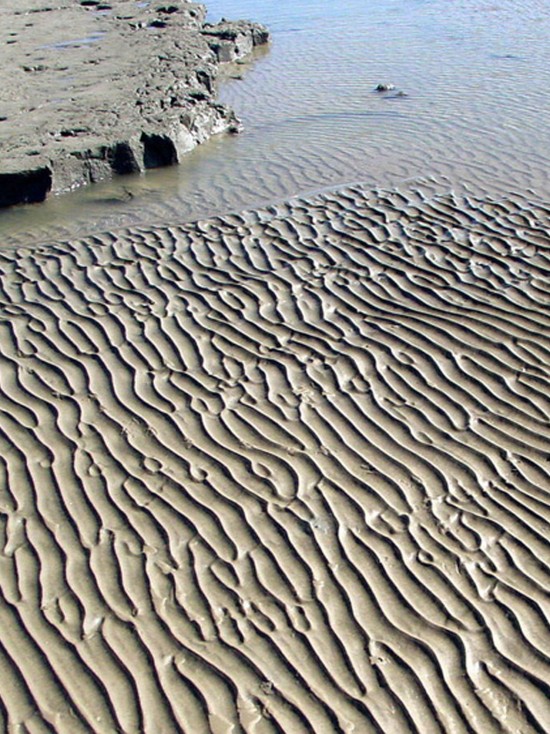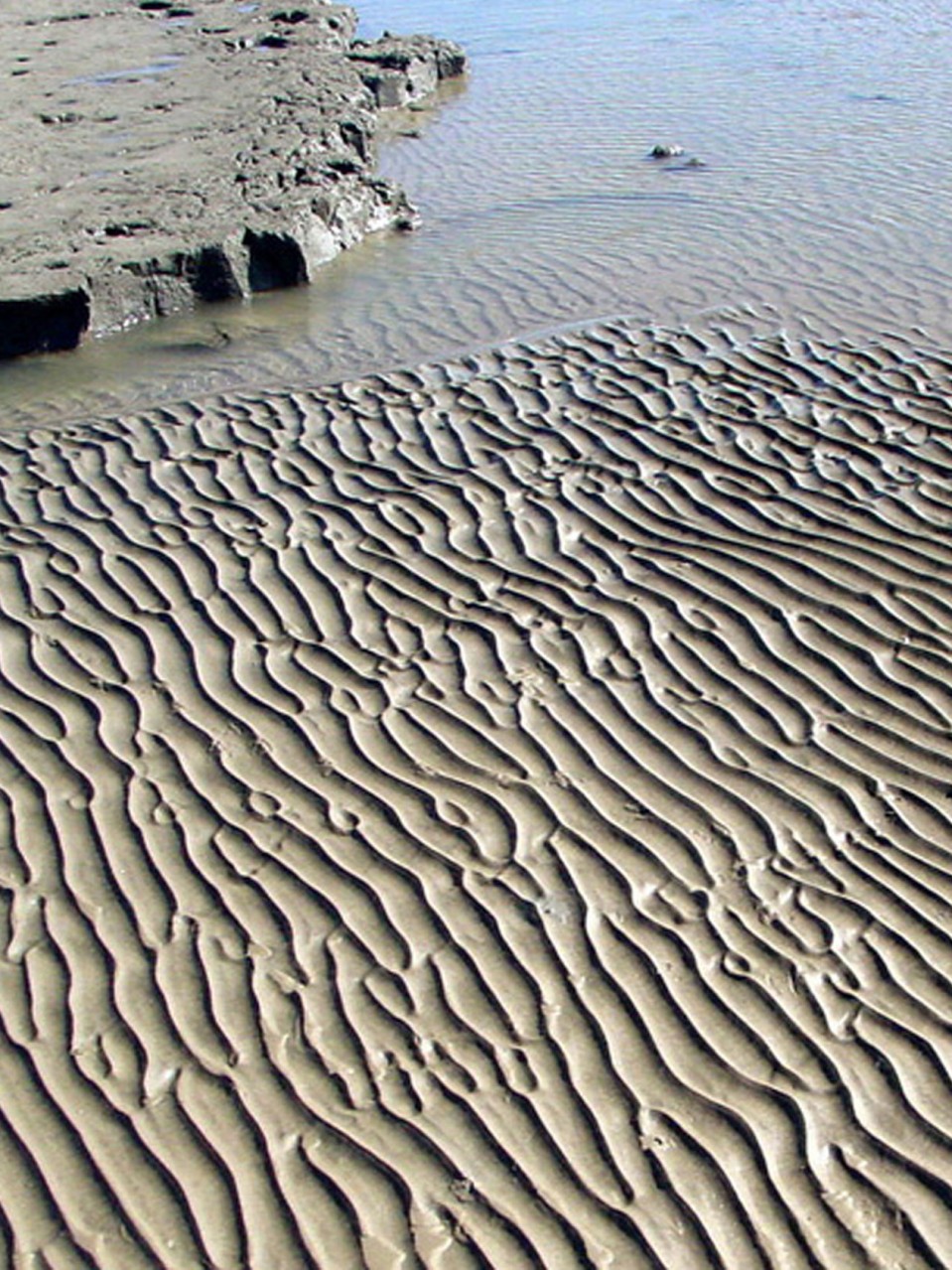Ripple effect
Beach sand patterns are linked to times of environmental flux.



When a coastal tide rolls out, it can reveal beautiful ripples in the temporarily exposed sand. These same undulating patterns in petrified seabeds that have been preserved for millions or billions of years offer clues to the conditions in which they formed.
The spacing between ripples is proportional to the depth of the water and the size of the waves that molded them. But subtle kinks and swirls in these patterns, known as defects, are found in both ancient and modern seabeds. After studying waves’ effects on an artificial beach in a wave tank, researchers at MIT and elsewhere identified common ripple defects associated with particular wave conditions. They reported in Geology that those resembling hourglasses, zigzags, and tuning forks were probably shaped in periods of environmental flux—for instance, during strong storms or changing tidal flows.
“The type of defect you see in ripples could tell you about how dramatic the shifts in weather conditions were at the time,” says geology professor Taylor Perron of the Department of Earth, Atmospheric, and Planetary Sciences. “We can use these defects as fingerprints to tell not just what the average conditions were in the past, but how things were changing.”